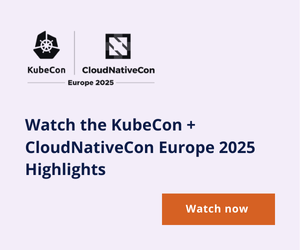LLM agents are rapidly becoming integral to business operations, and securing their access to sensitive systems presents unprecedented challenges. Traditional authorization models fall short when applied to these dynamic, evolving entities.
This gap is precisely what Permit.io addresses with its new agent.security platform. Twain Taylor, editor at Software Plaza, recently explored this revolutionary approach to authorization in an agentic AI world with Or Weis, CEO of Permit.io.
The authorization crisis in the age of AI
The traditional approach to authorization where permissions are baked into apps or managed through static ACLs, creates a lot of technical debt. At his previous company, Rookout, Weis had to rebuild the access control system 5 times in less than 3 years. That was the frustration that led to the founding of Permit.io to take this problem off the shelf for everyone.
As companies rush to deploy LLM agents, many are realizing that traditional authorization models are insufficient. The ephemeral nature of AI agents, their evolving capabilities, and their ability to act autonomously create an authorization paradigm we’ve never seen before.
The foundation: Understanding authorization models
Before diving into AI-specific challenges, it's essential to understand the evolution of authorization models:
Role-based access control (RBAC)
The most familiar model assigns permissions to roles, which are then assigned to users. While simple to implement, RBAC becomes unwieldy when dealing with complex hierarchies or relationships. One energy company ended up with tens of thousands of role variations, creating an unmanageable system.
Attribute-based access control (ABAC)
This model evaluates rules based on attributes of the user, resource, action, and environment. ABAC offers more flexibility than RBAC but struggles with expressing hierarchical relationships efficiently. It's not very good for describing hierarchies, especially when dealing with nested sites or resources.
Relationship-based access control (ReBAC)
ReBAC represents authorization as a graph of relationships between entities. By traversing this graph, the system can determine if a path exists between a user and a resource, thereby granting or denying access.
The unique challenges of LLM agent authorization
LLM agents present three distinct authorization challenges that traditional models don't adequately address:
1. The identity problem
Organizations can’t rely on the model the LLM agents are using, where they’re running, or their frameworks to establish identity. All these can change while the agent is working.
The solution? Focus on intent and purpose rather than components. If an agent is still working towards the same goals with the same parameters, it can be considered the same entity even if its underlying components have changed. By asking the agent and understanding its intent, we can establish a more reliable identity mechanism.
2. Zero standing permissions
LLM agents should have zero standing permissions. Unlike humans, who have accountability and consciousness or services that operate deterministically, AI agents can be influenced by prompt injections or evolve in unexpected ways.
The alternative approach is what Permit.io calls “just-in-time derived permissions”. Instead of granting permanent access, permissions are calculated at the moment of access based on relationships and context. This reduces the blast radius of any security incident by a huge amount.
3. Consent management
The third challenge is managing how permissions are delegated to LLM agents. This means understanding who delegated access to the agent, what specific tasks they authorized, the context in which the agent is operating, and organizational policies that may restrict certain actions.
This consent management can be done proactively before agent interaction begins or reactively through human-in-the-loop processes that bring consent verification directly into the conversation flow.
Implementing authorization for LLM agents
The implementation architecture for LLM agent authorization differs significantly from traditional models:
Decouple policy from code
The biggest mistake in authorization is coupling policy and code. This tight coupling means every policy change requires code changes and vice versa. For LLM agents, this is even worse. Their capabilities and access needs change rapidly, so you need a policy layer that can evolve independently of the application code.
Building relationship graphs for authorization
Building relationship graphs for LLM authorization requires a full ReBAC approach with just-in-time evaluation. You need to first build a graph that includes human identities, agent identities, resources, actions, and the relationships between them.
Next, you need to define clear derivation paths showing how permissions flow from delegators to agents, from agents to resources, and across organizational hierarchies. Finally, you need real-time permission evaluation based on current context, established relationships, organizational policies, and consent parameters.
The MCP gateway approach
The agent.security implements this model with a Model Context Protocol (MCP) gateway. The gateway intercepts requests from LLM agents to MCP servers, verifies agent identity through intent analysis, determines permissions based on relationships, enforces consent requirements, and provides a zero-setup implementation that doesn’t require preconfiguration. You simply route your agents through the gateway to the target MCP server URL, and the gateway handles all authorization for you.
Practical implementation strategies
For organizations looking to implement authorization for LLM agents, several practical approaches can help, including understanding best practices, taking into account the entire relationship context, and planning for evolution.
Whatever solution you implement today will need to evolve as LLM capabilities advance and organizational requirements change. Build flexibility into your authorization architecture from the start.
The authorization landscape for LLM agents is rapidly evolving, with security implications that extend far beyond traditional models. By implementing just-in-time derived permissions through relationship-based access control, organizations can achieve the balance of security and functionality needed for this new paradigm.
To learn more about implementing authorization for LLM agents and see a demonstration of these principles in action, watch the full webinar with Or Weis on Software Plaza's website.






